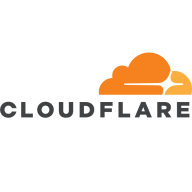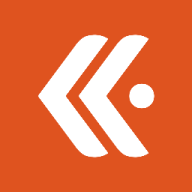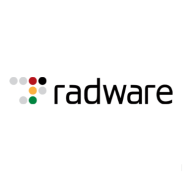


Kentik and Radware DDoS compete in the network management and security space. Kentik has the upper hand in network insight and optimization, while Radware excels in robust security and attack prevention.
Features: Kentik is a comprehensive SaaS solution with real-time network visibility and advanced analytics. It excels in traffic visualization, anomaly detection, and alerting. Radware DDoS focuses on DDoS protection, offering multi-layered defense mechanisms and behavioral analysis for effective attack mitigation.
Room for Improvement: Kentik could enhance user interface navigation and provide more actionable insights for anomaly detection. It lacks built-in DDoS mitigation, requiring integration with other solutions. Radware DDoS could improve its cloud scrubbing performance, offer more detailed documentation, and integrate AI for advanced threat detection and automated incident response.
Ease of Deployment and Customer Service: Kentik offers a SaaS-based deployment, ensuring ease of use and maintenance-free operations, with quick configuration and strong customer service. Radware DDoS offers various deployment models, including hybrid and on-premises, providing flexibility but potentially complex setup, with efficient customer support that could improve in communication and documentation.
Pricing and ROI: Kentik's pricing is based on device and flow usage, offering competitive rates that justify its comprehensive analytics capabilities, providing clear ROI through cost savings on infrastructure. Radware DDoS is priced higher due to its extensive security features, offering strong DDoS protection but potentially straining smaller budgets.
WordPress security can be tricky, and that's where Cloudflare can be absolutely helpful for small businesses.
For the small project I was working on, using the basic tier provided a huge improvement at zero cost.
In production environments, especially for service providers on IP networks and data centers, Kentik helps in reducing the time to identify and resolve issues.
The hybrid approach optimized infrastructure costs and personnel resources.
This would help us address issues promptly, especially during unforeseen events like DDoS attacks.
Cloudflare does not offer hands-on technical support to fix customer problems but rather a self-service model.
The key factor is the language in which the support is offered, which, in this case, is in Thai.
I have mostly used forums for any support needed because the setup is straightforward and the documentation is quite good.
They have monthly calls and discuss the product roadmap with us to determine what is needed.
Providing assistance almost instantly when needed.
Ensuring less than one second mitigation for L3/L4 and less than ten seconds for L7.
Before using Radware, I experienced some delays with another product, but with Radware, we have immediate connections with high-level technical support.
It is a SaaS tool, but the fact that they have workloads deployed across the world proves that it is a highly scalable tool.
The tool offers very good performance, even during high-traffic periods.
I rate the solution’s scalability an eight out of ten.
Kentik's integration with Kubernetes makes scaling easier.
You can scale as many devices and tests as you want, but you should have a good number of credits in your accounts.
In terms of scalability, Radware DDoS excels.
Scalability is well-supported by Radware.
It is scalable and user-friendly.
For DDoS protection, I would not recommend Cloudflare.
I rate the solution’s stability an eight out of ten.
The service is very stable with no impacts during high-traffic periods.
In production, however, dimensioning of the underlying platforms is something to be mindful of.
Based on stability, I would give Kentik a nine.
In my opinion, there is no downtime experienced with Radware DDoS Protection Service due to external network redundancy.
There's a need for improvement in areas like AI-based DDoS attacks and Layer 7 WAF features.
Despite these challenges, overall, Cloudflare remains the preferred solution compared to Azure, AWS CloudFront, and Google Cloud Armor.
Cloudflare should add more documentation and pricing to the cloud version.
More work is required to integrate AI for troubleshooting, simplifying root cause analysis, and providing suggested solutions for network issues.
We suggest that clear visibility within a management console could significantly enhance Radware DDoS's usability.
There should be improved bot management integration that mitigates bot-based DDoS attacks completely.
I suggest improvements to the user interface to make it easier to use and to find the necessary data for analysis.
That's where Cloudflare shines for smaller businesses – it's ten times cheaper than Akamai.
I find it to be cheap.
I think they should consider reevaluating the pricing for support, as it can be quite high.
The pricing is good and aligns with the market target.
Kentik’s pricing is competitive in the marketplace.
Radware pricing is on the high end, suitable more for larger organizations.
I didn't check pricing of other providers in depth but verified with two, and found Radware to be significantly cheaper compared to F5.
We have a premium cost setup to align with a tier four uptime certified data center, storing and protecting critical infrastructure.
The most valuable features of the solution are performance and security.
Techniques like minification and image compression reduce the size of assets, leading to better performance and faster user load times.
The solution has been able to compare it to the market, and I think the product has taken great strides in automating quite a bit of things, and they use a lot of AI.
The most important feature is cybersecurity.
One of the most valuable features of Kentik, especially for service providers, is its ability to visualize all the BGP peering and the status of the BGP peering platform.
Kentik is easy to use and set up.
The support from Radware is also exceptional, as they are always willing to jump on a call to help solve issues and improve our network design.
The ERT feeds, which are based on Radware intelligence services, have been beneficial to my organization because they block a lot of malicious IP addresses and botnets.
The best feature of Radware DDoS Protection Service is the automation.



Cloudflare is a highly-regarded Content Delivery Network (CDN) and a Distributed Denial-of-Service (DDoS) protection solution. The robust global connectivity cloud platform that is Cloudflare ensures users are able to connect to the Internet quickly, securely, and reliably. Cloudflare is one of the world's largest networks in the marketplace today. Using Cloudflare, businesses, educational entities, NGOs, vloggers, bloggers, and anyone else with an internet presence can experience more secure, faster websites and applications.
Currently, there are millions of Internet locations on Cloudflare, and the Cloudflare network
continues to grow every day by the thousands. The solution is able to fulfill the requests for
millions of websites seamlessly and serves on average 45 million HTTP requests per second.
Cloudflare has safe, secure data centers in close to 300 cities worldwide to ensure every
client request is filled as quickly as possible. It is Cloudflare’s edge network that makes this
possible by keeping content and other services as close to each client as possible, so the
information requests are always only seconds away.
Many organizations that work in democracy, civil society, human rights, or the arts are able to
access Cloudflare's highest levels of protection for free via Project Galileo. Additionally, official
election websites can be secured from hacking and fraud through Cloudflare’s Project
Athenian, also at no additional cost.
Cloudflare can also help organizations of all sizes develop a robust zero-trust strategy to
ensure the highest levels of productivity and profitability. Employees, stakeholders, and end users have a greater level of satisfaction and overall improved user experience, which can, in
turn, result in higher revenues and overall ROI. Zero-trust and BYOD (bring your own device)
access ensure end users and employees always have the best resources and technology
available to them at all times.
Cloudflare benefits
Cloudflare has many benefits. Some of its most valuable benefits include:
- Faster load times
- Robust DNS security
- Intuitive cloud Web Application Firewall (WAF)
- Free universal SSL
- Image enhancement
- Automatic browser caching
- Next-generation cloud load balancer
- Accelerated Mobile Pages (AMP)
- Rate limiting
- Minification
- Zero-trust capabilities
- Cost-effective
- Reduced carbon footprint
Reviews from real users
“Many websites require an SSL certificate because they sell stuff and want SSL. Cloudflare
comes with an SSL certificate built in. It's automatic. You sign yourself up for Cloudflare, and
an SSL certificate automatically protects your website. If you have a connection between your
website and your host, the server, Cloudflare, and the host, you don't necessarily need a
certificate.” Spencer M., Owner at Tech Exchange
“What I like best about Cloudflare is that my company can use it to trace and manage
applications and monitor traffic. The solution tells you if there's a spike in traffic. Cloudflare
also sends you a link to check your equipment and deployment and track it through peering,
so it's a valuable tool.” Daniel P., Network Engineer at Ufinet
“The most valuable feature of Cloudflare is the GUI. You are able to control the solution very
well through the interface. There is a lot of functionality that is embedded in the service.” PeerSpot user, Competence Center Manager at a tech services company
Kentik's AIOps Network Traffic Intelligence platform unifies network operations, performance, security, and business intelligence.
With a purpose-built big data engine delivered as public or private SaaS, Kentik captures a high-resolution view of actual network traffic data and enriches it with critical application and business data, so every network event or analysis can be tied to revenue & costs, customer & user experience, performance & risk.
Radware DDoS provides robust multi-layer protection against distributed denial of service attacks, featuring real-time monitoring and anomaly detection. Its scalable cloud-based and on-site deployment options ensure effective safeguarding of critical infrastructure.
Offering comprehensive defense, Radware DDoS includes features like data scrubbing, signature updates, and SSL-based mitigation. Integrated platforms and a user-friendly interface streamline its deployment. With advanced reporting, analytics, and behavioral analysis powered by machine learning, users experience fewer false positives. Despite these strengths, users highlight the need for improved scalability, seamless deployment, and enhanced machine learning capabilities. Better documentation, pricing, and customer service remain areas of improvement.
What features does Radware DDoS offer?In industries like banking, telecom, and government, organizations employ Radware DDoS to protect networks from DDoS attacks. It ensures server, web service, and mail security while enabling traffic monitoring and unauthorized access blocking. Its cloud-based options serve entities seeking infrastructure security and network traffic analysis.
We monitor all Distributed Denial-of-Service (DDoS) Protection reviews to prevent fraudulent reviews and keep review quality high. We do not post reviews by company employees or direct competitors. We validate each review for authenticity via cross-reference with LinkedIn, and personal follow-up with the reviewer when necessary.